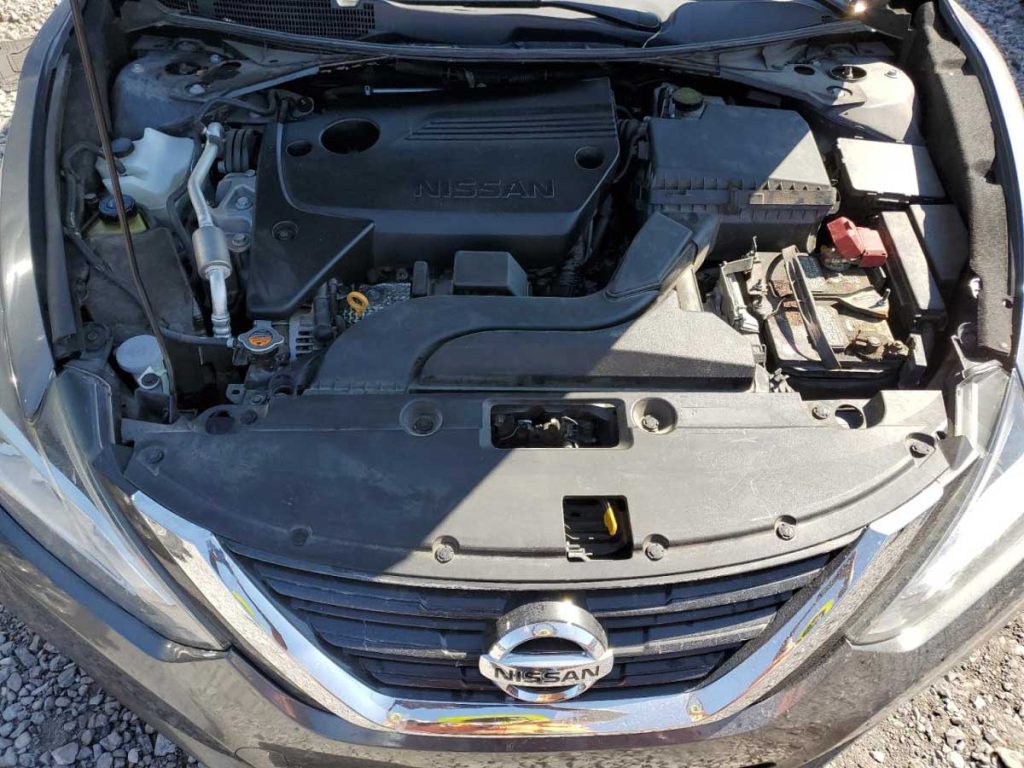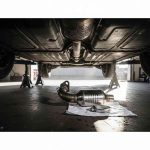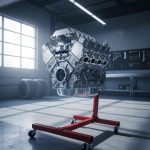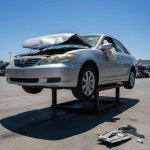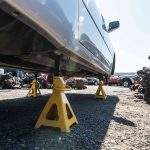Buying a used Nissan Altima engine or transmission from a junkyard can save you a lot of money and help keep your car running for a long time. By purchasing from local junkyards listed on U-Pull-It.com, you can get affordable, quality used parts. This article will tell you everything you need to know about the prices, part condition, and why junkyards are a good place to find used Nissan Altima parts.
How Much Can You Save Buying a Nissan Altima Engine or Transmission from a Junkyard?
Getting used parts for your Nissan Altima from a junkyard is a smart way to save money. Here are some average prices for Nissan Altima engines and transmissions at junkyards like Pull-A-Part, LKQ Pick Your Part, and others:
| Part Type | Estimated Price Range |
|---|---|
| Engine – Long Block | $276.32 – $339.99 |
| Engine – With Accessories | $388.99 |
| Engine – Bare Block | $110.00 – $200.69 |
| Transmission | $182.35 |
| Transfer Case (4×4) | $137.50 |
Note: Prices can change depending on the junkyard’s location, the vehicle model, and other fees like core charges.
A new Nissan Altima engine can cost between $4,000 and $7,000, and a new transmission can cost between $3,000 and $4,500. Buying a used part from a junkyard can save you up to 50-75%, making it a much more affordable option.
Where to Buy Used Nissan Altima Parts?
Local junkyards are one of the best places to buy used Nissan Altima engines or transmissions. Junkyards like Pull-A-Part and LKQ Pick Your Part are self-service, meaning you need to bring your own tools and remove the part yourself. You can find these junkyards by visiting the junkyard directory on U-Pull-It.com.
Self-service junkyards let you check out the parts yourself and make sure you get something in good condition. For tips on what tools to bring and how to visit a junkyard, take a look at our article on getting used Ford F-150 parts from local junkyards.
Junkyard Auto Part Interchange Systems
One great thing about junkyards is they use interchange systems. These systems tell you which parts are compatible with different makes and models. For example, a Nissan Altima engine might fit different model years or even other Nissan vehicles like the Nissan Sentra. These systems help you find the right part more easily and at a better price.
Used Auto Parts Compatibility and Fitment
Nissan Altima Model Year and Trim Variations
It is very important to make sure the engine or transmission you buy is the right fit for your specific Nissan Altima model year and trim level. Even small differences between model years can make a part incompatible. Always double-check the details before buying.
VIN Verification
Use the Vehicle Identification Number (VIN) to verify compatibility. The VIN provides specific information about your car, like engine type and transmission, which can help make sure the part is a perfect match.
Consulting Professionals
If you’re unsure, it can be helpful to talk to a mechanic or use online databases to confirm if the part will fit your car. Many junkyards have staff who can help you verify part compatibility.
Legal and Documentation Requirements
Bill of Sale
When buying a used engine or transmission, always ask for a detailed receipt or bill of sale. This document should include part numbers and the VIN of the donor vehicle. Having this information is crucial for warranty claims or future references.
Title Issues
In most cases, titles are not required for individual parts like engines or transmissions. However, getting proper documentation can reassure you and prevent any potential legal issues.
How Do Junkyards Get Engines and Transmissions?
Junkyards get vehicles from different places, like insurance auctions, people selling old cars, or cars involved in minor accidents. Many of these cars have damage that is not related to the engine or transmission, so those parts are still in good shape. This is why the parts can be so affordable and reliable.
When cars arrive at a junkyard, workers inspect them, and they take out any good parts to store. Engines and transmissions are usually labeled so you can easily see the condition and mileage of the part before buying. If you want to learn more about selling your car to a junkyard, check out our article on selling junk cars.
Differences Between Junkyards and Salvage Yards
Definitions
Although people often use the terms junkyard and salvage yard interchangeably, there can be differences. Salvage yards typically focus on selling parts from cars that are considered totaled by insurance companies, while junkyards might have a wider mix of scrap and used parts from many sources.
Selection and Pricing
These differences can affect the parts available and the prices. Salvage yards may have parts in better condition since they come from more recent accidents, whereas junkyards might offer more variety at potentially lower prices.
What to Expect When Buying Used Parts from a Junkyard
Check the Condition
Before buying an engine or transmission from a junkyard, you should check for any damage. Look for:
- Fluid Condition: Transmission fluid should be red or pink, not dark or burnt. Engine oil should be clear with no dirt.
- Signs of Wear: Look for leaks, cracks, or rust.
- Mileage: Ask the junkyard about the mileage of the car the part came from.
Common Nissan Altima Issues
Nissan Altimas are known to have certain issues with transmissions, especially CVTs, in some model years. Make sure to pay extra attention to the transmission’s condition if you are buying one from a junkyard.
Bring the Right Tools
Self-service junkyards mean you have to take out the parts yourself. Make sure you bring:
- Wrenches and Socket Sets: These are important for removing bolts.
- Pry Bars: Helpful for getting stuck parts apart.
- Safety Gear: Gloves, safety glasses, and strong shoes to stay safe.
You can also read our guide on used engine blocks to learn how you can save money on big car repairs by using junkyard parts.
Removal and Installation Considerations
Complexity of the Task
Removing an engine or transmission is not an easy task. It often requires specialized equipment, like an engine hoist, and can take a lot of time. Make sure you have the right tools and help if needed.
Professional Services
Some junkyards will remove the part for you, but they might charge an extra fee. If you’re not comfortable doing it yourself, consider hiring a mechanic to assist.
Installation Costs
Don’t forget that buying a used part means you also need to pay for installation. Make sure to include this cost when calculating your savings.
Are Junkyard Parts Reliable?
People often wonder if used parts from junkyards are any good. Here’s why they can be a great choice:
- Low Mileage Donor Cars: Junkyards often get cars that are totaled in accidents but have engines or transmissions with low miles.
- Warranties: Many junkyards give warranties on big parts, usually lasting between 30 and 90 days. This gives you some security in case the part doesn’t work properly. Make sure to ask the junkyard about their warranty.
For example, LKQ Pick Your Part usually offers a 30-day warranty on parts so you can return or exchange them if needed.
Transportation Logistics
Moving Large Parts
Engines and transmissions are heavy and hard to move. You may need to rent a truck or use a hoist to load it. Some junkyards offer help with loading large items, so be sure to ask.
Junkyard Assistance
Some junkyards may offer delivery services for an additional fee. This can be helpful if you don’t have the equipment to transport a large part yourself.
Safety Precautions
Hazard Awareness
Junkyards can be hazardous places. Always be mindful of unstable vehicles, sharp objects, or hazardous materials. Wear proper safety gear such as gloves, safety glasses, and sturdy footwear to prevent injuries. Be cautious when moving heavy parts, and do not attempt to lift more than you can handle.
Potential Risks and Mitigation
Hidden Defects
Used parts might have unseen issues. To avoid this, thoroughly inspect the part before buying, and always choose parts that come with a warranty. This way, you can return or exchange the part if it doesn’t work properly.
No Guarantee of Longevity
While buying used parts is cost-effective, they may not last as long as new parts. It’s important to consider this in your decision-making process, especially for critical components like engines and transmissions.
Online Salvage Options
National Databases
If your local junkyards don’t have the part you need, you can use online salvage yard inventories or national databases to widen your search. Some junkyards list their parts online, making it easier to find exactly what you’re looking for.
Shipping Considerations
Shipping large parts like engines or transmissions can be challenging. Always ask about shipping costs, insurance, and delivery times when ordering from an out-of-area salvage yard. Shipping can add significant costs, so it’s important to factor that into your budget.
Other Things to Keep in Mind When Buying Junkyard Parts
- Core Charges: Some junkyards charge a refundable core fee, which you get back if you return the old engine or transmission.
- Price Differences: Prices may be different for car parts versus truck parts. Always call ahead to check prices and inventory.
- Extended Warranties: Some junkyards offer longer warranties for an extra cost. This can be a good idea if you’re unsure about the condition of the part.
Environmental Impact
Eco-Friendly Choice
Buying used parts is not only cheaper but also better for the environment. It reduces the need for new parts to be made and helps recycle materials that would otherwise go to waste.
Disposal of Old Parts
If you’re replacing an old engine or transmission, ask the junkyard if they will take the old part for recycling. This helps make sure it’s disposed of in an environmentally friendly way.
Cost-Benefit Analysis
Total Savings
When buying used parts, make sure to calculate the total savings. Include the cost of the part, core charges, tools needed, transportation, and installation. This will help you determine if buying used is truly worth the savings compared to buying new or rebuilt parts.
Alternative Options
Consider other options like rebuilt or remanufactured engines and transmissions. These might cost more than used parts but offer better reliability and longer lifespans, providing a middle ground between cost and durability.
Frequently Asked Questions
How Do Junkyards Test Engines and Transmissions?
Most good junkyards will test major parts before selling them. Engines are often tested for compression, and transmissions are checked to make sure they shift smoothly.
Can I Return a Used Nissan Altima Engine or Transmission?
Yes, many junkyards have return policies, usually within 30 days. Make sure to ask about their policy before buying.
How Do I Find Compatible Parts for My Nissan Altima?
Most junkyards have interchange systems to help you find out which other Nissan models use the same engine or transmission as your Altima.
Why Are Junkyard Engines and Transmissions So Cheap?
Junkyards get cars from auctions, accidents, or people selling old cars. Since these parts are used and you often have to remove them yourself, the prices are much lower than buying new parts.
What Tools Do I Need to Remove an Engine or Transmission?
You’ll need wrenches, socket sets, pry bars, and safety gear. You might also need an engine hoist for big parts.
Conclusion
Buying a used Nissan Altima engine or transmission from a junkyard is a great way to save money and keep your car running. With careful inspection, the right tools, and a good warranty, you can find reliable parts for a lot less money than new ones. Start your search for local junkyards at U-Pull-It.com and save big on your next Nissan Altima repair.
For more ways to save money on car repairs, check out our article on buying used Chevy Silverado 1500 transmissions from a junkyard.
